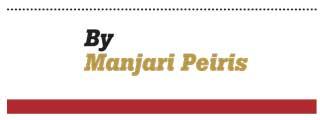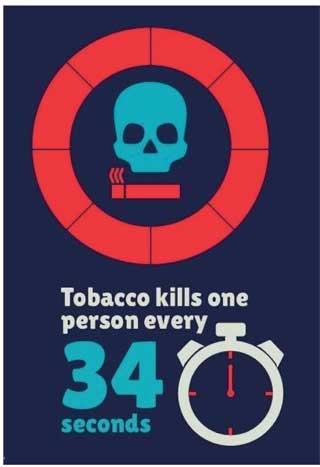29 May 2021 - {{hitsCtrl.values.hits}}
 Every country has an obligation to protect the health of its people, and all Parties to the World Health Organisation’s Framework Convention on Tobacco Control -WHO FCTC, have made a specific commitment to implement strong tobacco control policies throughout the world, including effective cessation services, as an important means of fulfilling their obligation to protect the health of their people. There has been incredible progress in the 11 years since MPOWER monitoring began, but it is only the beginning. It is important that we all recommit to ensuring all the people of the world are protected fully from the great harms of the tobacco epidemic.
Every country has an obligation to protect the health of its people, and all Parties to the World Health Organisation’s Framework Convention on Tobacco Control -WHO FCTC, have made a specific commitment to implement strong tobacco control policies throughout the world, including effective cessation services, as an important means of fulfilling their obligation to protect the health of their people. There has been incredible progress in the 11 years since MPOWER monitoring began, but it is only the beginning. It is important that we all recommit to ensuring all the people of the world are protected fully from the great harms of the tobacco epidemic.
 THE SIX COMPONENTS OF WHO’S MPOWER PROGRAMME STAND FOR;
THE SIX COMPONENTS OF WHO’S MPOWER PROGRAMME STAND FOR;
Monitor tobacco use and prevention policies, Protect people from tobacco use, Offer help to quit tobacco use, Warn about the dangers of tobacco, Enforce bans on tobacco advertising, promotion and sponsorship and Raise taxes on tobacco Progress in global tobacco control has been strong since MPOWER was introduced in 2007 as a tool to help countries implement WHO FCTC demand reduction measures. Five billion people – about 65% of the world’s population – are now covered by at least one MPOWER measure at the highest level of achievement. This number has more than quadrupled since 2007 when only 1 billion people – 15% of the world’s population – were protected by at least one MPOWER measure (not including Monitoring and Mass media campaigns, which are assessed separately).
Since the last WHO report on the global tobacco epidemic, two years ago, progress has been steady, with 15 countries that previously had no best-practice policies taking action to reach best-practice level on one measure, and a further 21 countries that had at least one measure in place adding at least one more. This means a total of 36 countries introduced one or more MPOWER measures at the highest level of achievement between 2016 and 2018.
TOBACCO CESSATION NEEDS ATTENTION
Offering help to quit – the focus of this seventh WHO report on the global tobacco epidemic – is an essential component of any tobacco control strategy. Global targets for tobacco use will not be reached unless current tobacco users quit, and indeed, many tobacco users report that they want to quit. With the help of costeffective population-based interventions, as outlined in the “O” measure of MPOWER (Offer help to quit tobacco use), tobacco users greatly increase their chances of successfully quitting. Unfortunately, only 13 new countries have started providing comprehensive cessation programmes since 2007. There are now 23 countries protected by this measure, up from 10 countries in 2007.
However, in terms of population coverage, progress is still promising. One-third of the world’s population – 2.4 billion people in 23 countries – have access to cessation services provided at bestpractice level. This is 2 billion more people (26% of the world’s population) protected by comprehensive cessation support programmes since 2007, meaning that cessation programmes are now the second most adopted MPOWER measure in terms of population coverage. This is thanks to two large countries, India and Brazil, adopting comprehensive cessation support at best-practice level.
Over half of the world’s population – 3.9 billion people living in 91 countries – benefit from large graphic pack warnings featuring all recommended characteristics, making it the MPOWER measure with both the highest population coverage and the most countries covered. It is also important to note that by the end of 2018, 10 countries had adopted legislation mandating plain packaging of tobacco products and had issued regulations with implementation dates (Australia, France, Hungary, Ireland, New Zealand, Norway, Saudi Arabia, Thailand, United Kingdom and Uruguay). Plain packaging legislation is also in progress in at least nine other countries.
SIGNIFICANT PROGRESS IN LOW AND MIDDLEINCOME COUNTRIES
Of the 5 billion people protected by at least one complete MPOWER measure, 3.9 billion live in low- and middle-income countries. Brazil and Turkey, the only two countries that have adopted all MPOWER measures at the highest level, are both middle-income countries. In all, 61% of the population living in low- and middleincome countries are protected by at least one complete MPOWER measure, and 44% are protected by at least two complete MPOWER measures.
There has been great improvement in low-income countries since 2007, when only three of the 34 countries in this income group had a single measure adopted. Today, half (17) of all low-income countries have at least one MPOWER measure in place at best-practice level. There are now eight low-income countries that have one best-practice measure in place, five that have two, three (Chad, Nepal, Senegal) that have three and one (Madagascar) that has four measures in place. Disappointingly, of the 17 lowincome countries with no measures in place at best-practice level, only three run a tobacco control programme from their Ministry of Health with at least five staff.
INCOMPLETE OR PARTIAL POLICIES ARE A STEPPING STONE TO COMPLETE POLICIES
Even where best-practice levels have not yet been achieved, each of the MPOWER measures has received some level of attention in the majority of the world’s countries. In addition to the 62 countries with a complete law on smoke-free environments, 70 countries have minimal to moderate laws that ban smoking in some but not all public places, workplaces and public transport, laying the groundwork for establishing a fully effective law in the future. This means that although the partial bans do not currently effectively protect these populations from the harms of secondhand smoke, as public support grows for the bans, only amendments to the law will be needed in some of these countries, whereas the adoption of a new law will be necessary for others.
While only 23 countries have cessation support measures that meet the criteria for best-practice, there are an additional 116 countries that provide full or partially costcovered services in some or most health facilities, and 32 more that provide services but do not cost-cover them. This makes a total of 171 countries in which tobacco users wanting to quit can find some level of support.
In addition to the 91 countries that mandate strong graphic health warnings on cigarette packages, 61 other countries have minimal to moderate laws that require some kind of warning on packs. These lessprominent warnings, while not as effective as the best-practice warnings, show some effort is being made to communicate the dangers of tobacco use to consumers, and provide an avenue for these 61 countries to strengthen their mandated warnings to best-practice level in the future.
In addition to the 48 countries that have adopted a TAPS ban, another 103 countries have partial TAPS bans in place, so at least some forms of advertising, promotion and sponsorship are already illegal.
While only 38 countries levy taxes as high as the WHO-recommended 75% of the retail price of a pack of cigarettes, another 62 countries levy taxes comprising between 50% and 75% of the price, and a further 61 levy taxes between 25% and 50%. Essentially, these countries are wellpositioned to further raise taxes as tobacco taxation gains more widespread support.
There has been substantial progress made globally since the 2003 adoption of the WHO FCTC. The successful scaling up of MPOWER measures over the past 10 years to the best-practice level, adopted by countries of all sizes and income levels, is evidence of the successful implementation of the demand reduction measures.
29 Nov 2024 37 minute ago
29 Nov 2024 39 minute ago
29 Nov 2024 2 hours ago
29 Nov 2024 2 hours ago
29 Nov 2024 2 hours ago